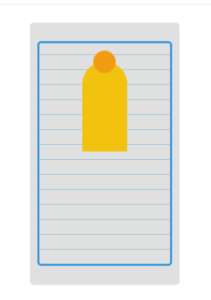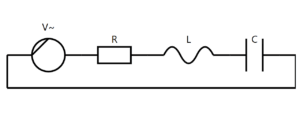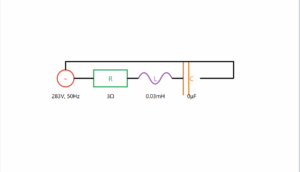Capacitor in DC and AC Circuits
This simulation demonstrates how a lamp behaves when connected in series with a capacitor under DC and AC power:
DC Circuit
AC Circuit
15 μF
Example
Question:
A lamp is connected in series with a capacitor. Predict your observations for DC and AC connections. What happens in each case if the capacitance of the capacitor is reduced?
Solution:
With a DC source: The capacitor charges up; after charging, no current flows and the lamp does not glow. Reducing \(C\) does not change this.
With an AC source: The capacitor offers capacitive reactance \((1/\omega C)\), so current flows and the lamp glows. Reducing \(C\) increases reactance, so the lamp will shine less brightly than before.
Physics Explanation:
DC Connection:
- Capacitor charges quickly and acts as an open circuit
- No continuous current flows after initial charging
- Lamp doesn't glow (or flashes briefly during charging)
- Reducing capacitance makes no difference to steady state
AC Connection:
- Capacitor continuously charges and discharges
- Current flows due to capacitive reactance \( X_C = \frac{1}{\omega C} \)
- Lamp glows continuously
- Reducing capacitance increases reactance, reducing current and lamp brightness
Capacitive Reactance: \( X_C = \frac{1}{2\pi f C} \)
Key Observations:
- DC: Lamp off (capacitor blocks DC after charging)
- AC: Lamp on (capacitor allows AC current to flow)
- Lower capacitance ⇒ Higher reactance ⇒ Dimmer lamp (AC only)



